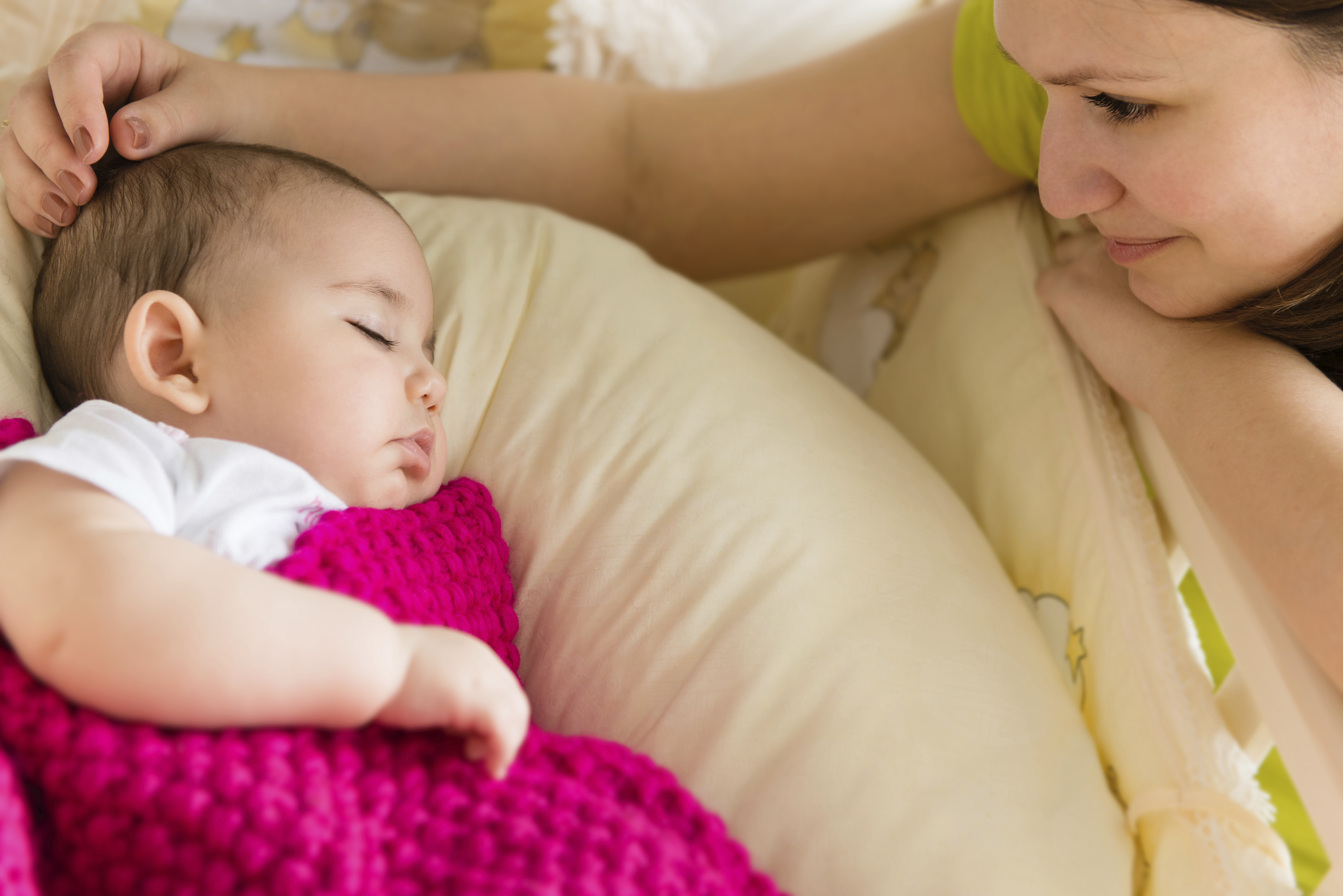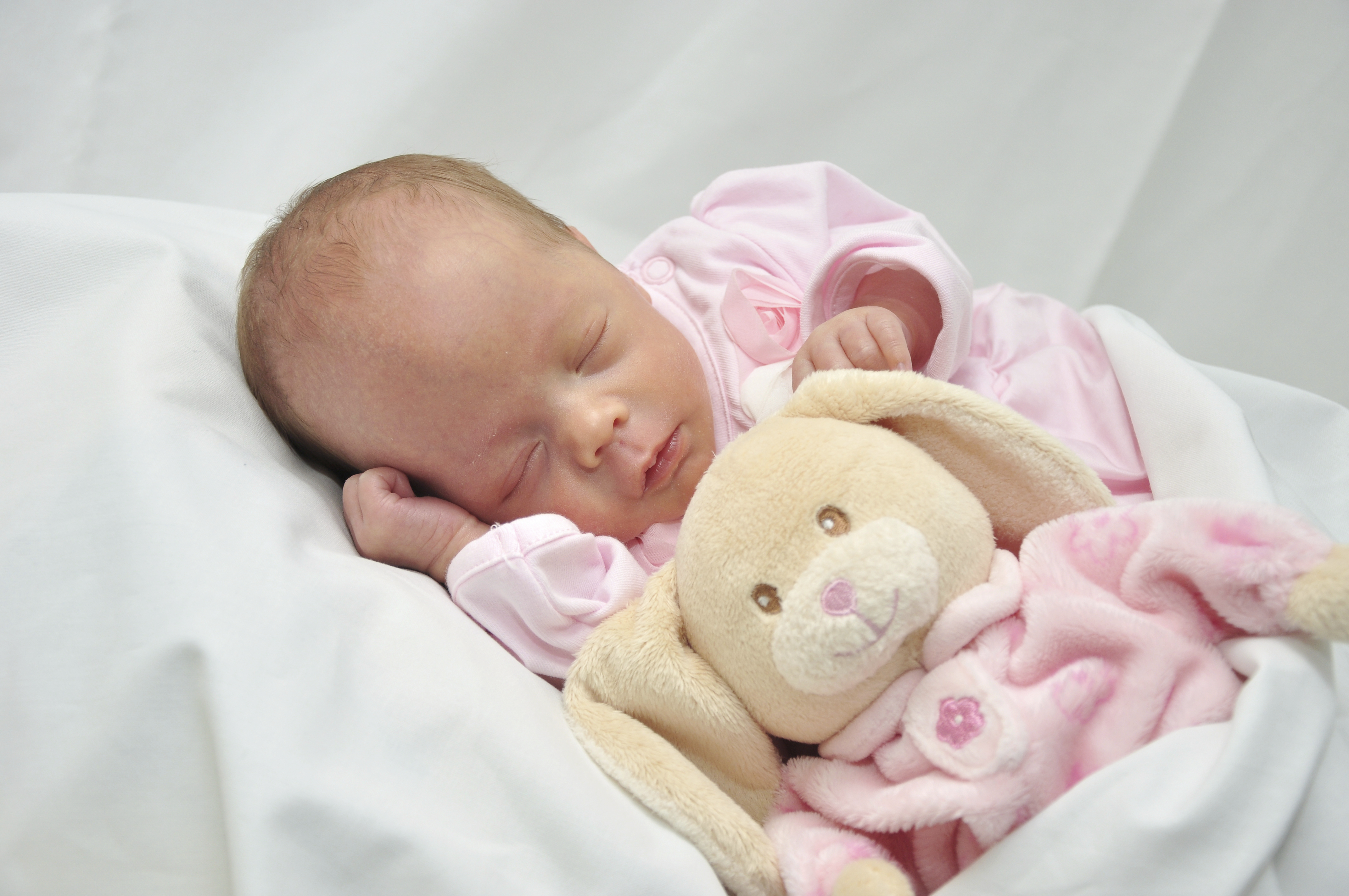One of the biggest preoccupations for new moms and dads is trying to figure out how to get a baby to sleep through the night. Sleep deprivation is consistently mentioned by the moms and dads in the Medela Facebook Community of almost 10,000 people as the number one concern. Lack of sleep is debilitating. It creates emotional tension that leads to intense stress, disorientation, and problems with memory, and concentration. Let’s face it, you just can’t function. The experts say that if you get 4 or 5 nights of broken sleep you are at risk of being sleep deprived. The reality for most new parents is being sleep deprived for 4 or 5 weeks – or even months!
We wrote an article last month that offered some suggestions for ways to help keep little ones asleep, like warm snuggly blankets, swaddlers, heating pads and soothing sounds machines. Since then, we’ve had other suggestions from our Medela community about ways to manage the sleeping environment that keeps a baby snoozing through the night. These two ideas were mentioned most often.
Safe Co-sleeping
Some parents believe in sleeping in the same bed with their babies (also known as “co-sleeping” or “family bed”) because they find that the baby stays more securely asleep by feeling the closeness of the mother’s body and by being able to conveniently breastfeed throughout the night. However, there is some disagreement among physicians and child welfare advocates as to whether co-sleeping, bedsharing (babies and their parents sharing the same bed), or room-sharing (being in the same room with the sleeping baby, but not sharing a bed) is the safest sleeping arrangement for babies.
As part of your process of making decisions about how to get your baby to sleep, please consider the recommendations of the Canadian Paediatric Society for a safe sleeping environment for babies. Many parents swear by co-sleeping, are confident that it’s the right choice for their families, and are vigilant to make sure they are doing it safely, for example, by not putting the baby on soft bedding (which can be a suffocation hazard), or not sharing a bed with a baby while the parent is under the influence of alcohol or drugs (intoxicated or heavily medicated parents might accidentally roll over onto a baby in the night, causing injury or death to the infant). Some bedsharing practices have also been linked to a higher risk of Sudden Infant Death Syndrome (SIDS). Whatever choice you make about co-sleeping, be sure to do your research and be aware of the recommendations of medical professionals, and work to minimize your baby’s risks.
Leanne says, “Co-sleeping does the trick for us. Now if my four-month old wakes I bring him back to sleep with me in my bed without even nursing.”
Carey says, “Co-sleeping was the only way I ever got sleep and my little one needed the closeness; maybe yours does too.”
Sharleen says, “I co-slept with my baby girl for her first 2 months. Then she would finally sleep in her cradle. Being close to the mother’s scent makes a big difference too – babies often sleep more soundly if they can smell their mother’s scent. So if you don’t want to co-sleep, try putting a piece of your clothing on the crib so she can smell you. It sounds goofy, but it works!”
Nina says, “My son never slept as a newborn! He stayed with me on our bed, usually on my breast, feeding or suckling. He only began to actually sleep for more than an hour at a time by week 11. Before than he was stuck on me all the time.”
Kayla says, “I’ve been told that co-sleeping is really bad because they get used to sleeping next to you and not on their own. It’s tough to stop co-sleeping, but I have a 5 month old and I just had to stop having him sleep in my bed, but he’s sleeping well now in his crib. Now he only wakes up once in the night, around 3-4 a.m., and he sleeps till 8 a.m. I also found that buying a swaddling blanket worked for him too.”
Room Sharing and Being Close
Many moms find that by sharing a room with their baby – for example, by having the baby’s crib, cradle or bassinet in the parents’ bedroom – they can stay close to the baby at night, even without bedsharing.
Michelle says, “I found by 7-8 weeks my little one hated to be swaddled. I found that he really just wanted my warmth and comfort. It sounds weird, I know, but I would sleep with a bassinet sheet in our bed and then put it on his bassinet mattress the next night. It smelt like us and he slept there happily, it was about that time that he began to sleep through the night so I think it worked.”
Getting enough sleep is one of the biggest challenges of parenting an infant. But with time, patience and persistence, it will get easier. Someday your child will sleep soundly through the night, and these early days will just be a memory. So even if your baby is a “bad sleeper” or seems to want to be held by you at all times, try to accentuate the positives: enjoy those soft cuddly moments as long as you can!
What has worked for you when trying to get your baby to sleep? Leave a comment and let us know, or join the discussion on the Medela Singapore Facebook page.




 KR
KR

















